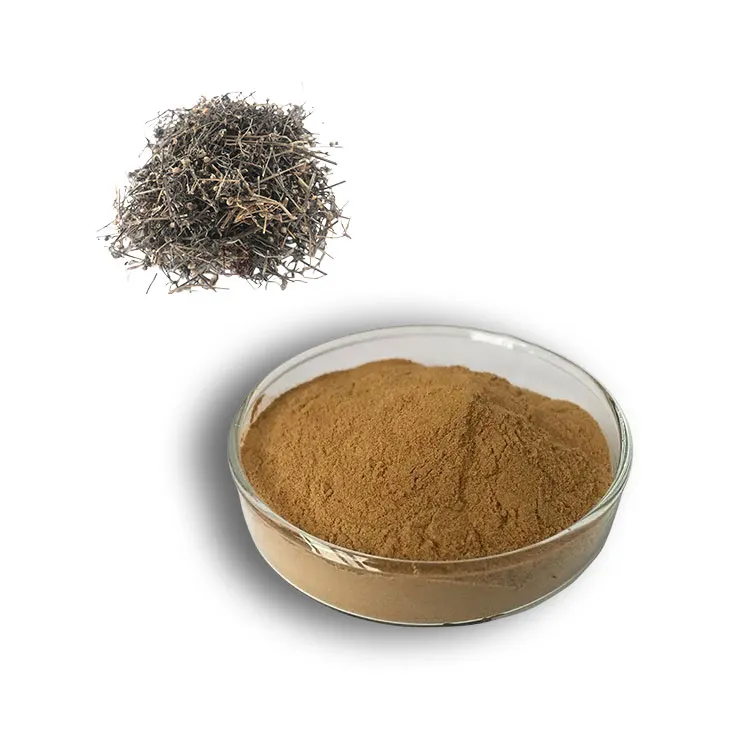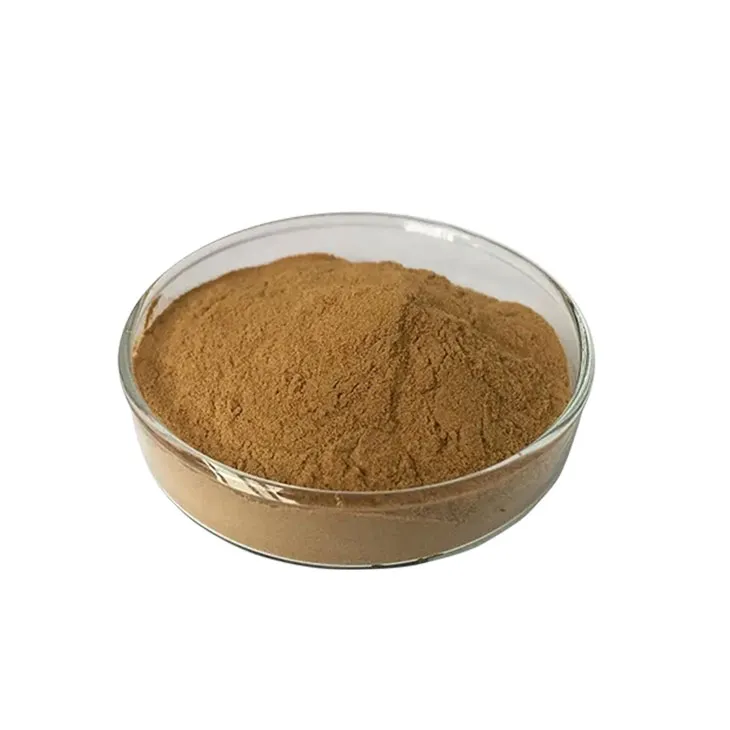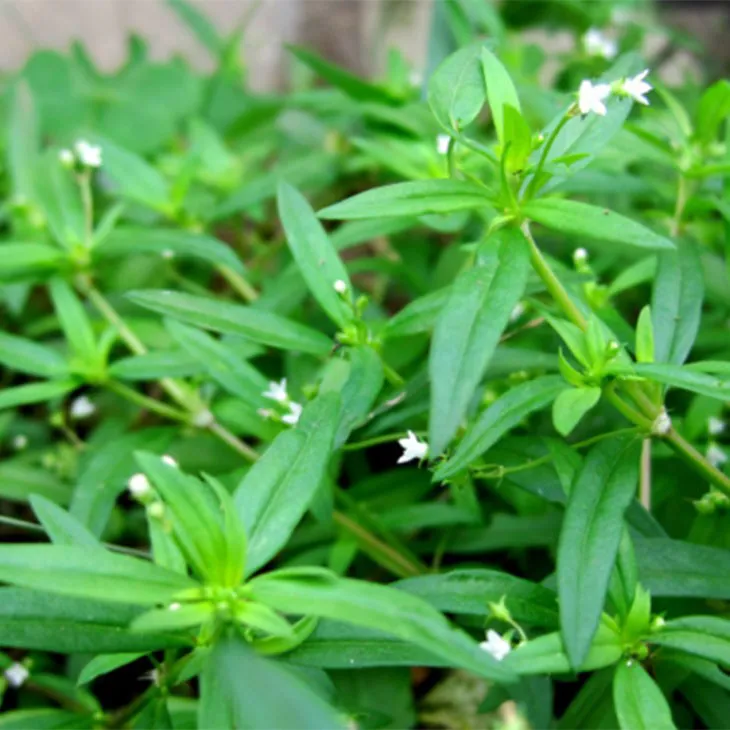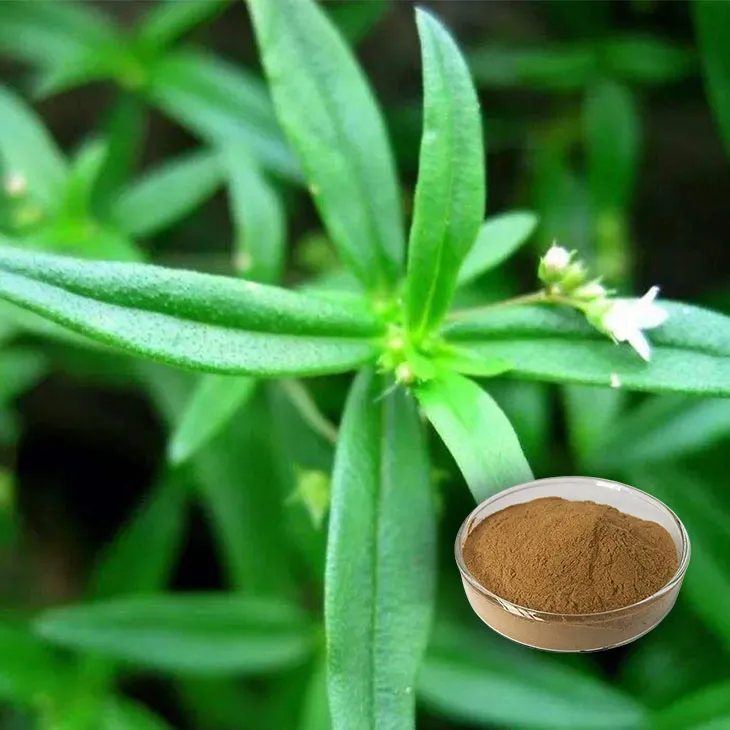- 0086-571-85302990
- sales@greenskybio.com
Optimal Bioavailability of Hedyotis Diffusa Extract.
2024-11-28

1. Introduction
Hedyotis diffusa is a well - known traditional Chinese medicinal herb, which has been widely used for its various potential therapeutic effects, such as anti - inflammatory, anti - tumor, and antioxidant activities. However, to fully exert its pharmacological effects, the bioavailability of Hedyotis Diffusa Extract (HDE) is a crucial factor. Bioavailability refers to the rate and extent to which a drug or active compound is absorbed and becomes available at the site of action in the body. In the case of HDE, understanding and optimizing its bioavailability can lead to more effective therapeutic applications.

2. Factors Influencing the Bioavailability of HDE
2.1 Extraction Methods
2.1.1 Solvent - based Extraction
- Solvent - based extraction is one of the most common methods for obtaining HDE. Different solvents can have a significant impact on the composition and bioavailability of the extract. For example, ethanol - based extraction may extract a different set of compounds compared to water - based extraction.
- The polarity of the solvent can determine which components of Hedyotis diffusa are extracted. Polar solvents like water are more likely to extract polar compounds, while non - polar solvents can extract non - polar substances. The bioavailability of these different components may vary, as polar and non - polar compounds may have different absorption mechanisms in the body.
- Supercritical fluid extraction (SFE), often using carbon dioxide as the supercritical fluid, has some advantages over traditional solvent extraction. It can operate at relatively low temperatures, which helps to preserve the thermolabile compounds in Hedyotis diffusa.
- The extracts obtained by SFE may have a different chemical profile compared to solvent - based extracts. These differences can influence the bioavailability. For instance, SFE - derived extracts may contain more volatile compounds in a more intact form, which could potentially enhance their absorption in the body.
2.2 Formulation
2.2.1 Nanoparticle Formulation
- Nanoparticle - based formulations of HDE can improve bioavailability. Nanoparticles can increase the solubility of poorly soluble compounds present in the extract. For example, if HDE contains hydrophobic compounds, encapsulating them in nanoparticles can enhance their dispersion in aqueous media, which is important for absorption in the gastrointestinal tract.
- They can also protect the active compounds from degradation in the body. Nanoparticles can act as carriers, shielding the active ingredients from enzymatic degradation or chemical reactions that could reduce their bioavailability.
- Liposomal formulations of HDE are another option. Liposomes are lipid - based vesicles that can encapsulate the active compounds. They have a similar structure to cell membranes, which can facilitate the interaction with cells and enhance uptake.
- The lipid bilayer of liposomes can protect the compounds from the external environment and also help in targeted delivery. For example, liposomes can be designed to target specific cells or tissues, increasing the local concentration of HDE at the desired site and potentially improving its bioavailability and therapeutic effect.
2.3 Administration Routes
2.3.1 Oral Administration
- Oral administration is the most common and convenient route for taking HDE. However, it also has some challenges in terms of bioavailability. The extract has to pass through the gastrointestinal tract, where it may face degradation by digestive enzymes and poor absorption due to factors such as low solubility and permeability.
- To improve the bioavailability of orally administered HDE, strategies such as formulation with absorption enhancers or co - administration with substances that can modify the gut environment can be considered. For example, some surfactants can be added to the formulation to increase the permeability of the intestinal epithelium to the extract components.
- Parenteral administration, such as intravenous or intramuscular injection, bypasses the gastrointestinal tract and can potentially provide higher bioavailability. However, it also has its own limitations, including the need for sterile preparations and potential injection - related side effects.
- For intravenous injection, the HDE can be directly introduced into the bloodstream, ensuring rapid distribution and potentially immediate availability at the site of action. But this route also requires careful consideration of the dosage form to avoid adverse reactions such as embolism or phlebitis.

3. Optimization of Absorption and Utilization in the Body
3.1 Modifying the Gut Microbiota
The gut microbiota can play a significant role in the bioavailability of HDE. Some bacteria in the gut can metabolize the compounds present in the extract, either enhancing or reducing their bioavailability. For example, certain bacteria may produce enzymes that can convert inactive precursors in HDE into active forms that are more easily absorbed. On the other hand, some bacteria may degrade the active compounds. Strategies to modify the gut microbiota, such as through the use of prebiotics or probiotics, can be explored to optimize the bioavailability of HDE. Prebiotics can selectively promote the growth of beneficial bacteria, while probiotics can directly introduce beneficial bacteria into the gut.
3.2 Using Permeability Enhancers
Permeability enhancers can be used to improve the absorption of HDE, especially when administered orally. These enhancers can act on the intestinal epithelium to increase its permeability to the extract components. For example, some natural or synthetic surfactants can disrupt the tight junctions between epithelial cells, allowing the compounds in HDE to pass more easily through the intestinal barrier. However, care must be taken to ensure that these enhancers do not cause any damage to the intestinal epithelium or have other adverse effects on the body.
3.3 Targeted Delivery Systems
Targeted delivery systems, such as those mentioned in the formulation section (nanoparticles and liposomes), can optimize the bioavailability of HDE. By targeting specific cells or tissues, these systems can increase the local concentration of the extract at the desired site. For example, if HDE has anti - tumor activity, a targeted delivery system can deliver the extract directly to the tumor cells, reducing the exposure of normal cells to the extract and potentially increasing its therapeutic effect while minimizing side effects. These systems can also protect the active compounds during transport in the body, ensuring that they reach the target site in an intact and active form.

4. Conclusion
In conclusion, optimizing the bioavailability of Hedyotis Diffusa Extract is a complex but important task for maximizing its therapeutic effects. The extraction method, formulation, and administration route all play crucial roles in determining the bioavailability. By carefully considering these factors and implementing strategies such as modifying the gut microbiota, using permeability enhancers, and developing targeted delivery systems, it is possible to improve the absorption and utilization of HDE in the body. Future research should focus on further exploring these strategies and developing more effective and safe methods to enhance the bioavailability of Hedyotis Diffusa Extract for better therapeutic applications.

FAQ:
What are the common extraction methods for Hedyotis Diffusa extract?
Common extraction methods for Hedyotis Diffusa extract include solvent extraction, such as using ethanol or water as solvents. Supercritical fluid extraction is also emerging as an effective method. Solvent extraction with ethanol can dissolve a variety of active components in Hedyotis Diffusa. Water extraction is more suitable for obtaining water - soluble components. Supercritical fluid extraction, often using carbon dioxide, can extract components with high selectivity and less solvent residue.
How does the formulation affect the bioavailability of Hedyotis Diffusa extract?
The formulation can significantly impact the bioavailability. For example, if it is formulated as a nanoparticle - based drug delivery system, it can enhance the solubility and permeability of the extract. A well - designed formulation can protect the active components from degradation in the gastrointestinal tract. Tablets or capsules with appropriate coatings can also control the release rate of the extract, ensuring a more sustained and effective absorption in the body.
What are the different administration routes for Hedyotis Diffusa extract and how do they influence bioavailability?
The common administration routes include oral, intravenous, and topical. Oral administration is the most convenient but may face challenges such as low absorption due to first - pass metabolism. Intravenous administration can directly deliver the extract into the bloodstream, resulting in a high initial concentration but may have potential risks associated with injection. Topical administration is mainly used for local treatment, and its bioavailability is mainly related to the skin penetration ability of the extract. Different routes need to be carefully selected based on the intended therapeutic effect and the nature of the extract.
Can the combination of different extraction methods improve the bioavailability of Hedyotis Diffusa extract?
Yes, the combination of different extraction methods can potentially improve bioavailability. For instance, a two - step extraction process where an initial water extraction is followed by a solvent extraction can capture a wider range of active components. This combination may result in a more comprehensive extraction of both water - soluble and lipid - soluble components, which can enhance the overall bioavailability and therapeutic efficacy of the extract.
How can the stability of Hedyotis Diffusa extract be maintained to optimize bioavailability?
To maintain the stability of Hedyotis Diffusa extract, proper storage conditions are crucial. This includes storing in a cool, dry place away from light. In terms of formulation, adding stabilizers can prevent the degradation of active components. For example, antioxidants can be added to prevent oxidation of certain bioactive compounds. Also, proper packaging materials can be used to protect the extract from environmental factors that may cause instability.
Related literature
- Bioavailability Enhancement of Herbal Extracts: A Review with a Focus on Hedyotis Diffusa"
- "Extraction Techniques and Bioavailability of Hedyotis Diffusa: Current Research and Future Perspectives"
- "Optimizing the Formulation of Hedyotis Diffusa Extract for Improved Bioavailability"
- ▶ Hesperidin
- ▶ Citrus Bioflavonoids
- ▶ Plant Extract
- ▶ lycopene
- ▶ Diosmin
- ▶ Grape seed extract
- ▶ Sea buckthorn Juice Powder
- ▶ Fruit Juice Powder
- ▶ Hops Extract
- ▶ Artichoke Extract
- ▶ Mushroom extract
- ▶ Astaxanthin
- ▶ Green Tea Extract
- ▶ Curcumin
- ▶ Horse Chestnut Extract
- ▶ Other Product
- ▶ Boswellia Serrata Extract
- ▶ Resveratrol
- ▶ Marigold Extract
- ▶ Grape Leaf Extract
- ▶ New Product
- ▶ Aminolevulinic acid
- ▶ Cranberry Extract
- ▶ Red Yeast Rice
- ▶ Red Wine Extract
-
Ivy Extract
2024-11-28
-
Astaxanthin
2024-11-28
-
Kelp Extract Powder
2024-11-28
-
Green coffee bean Extract
2024-11-28
-
Rose Hip Extract
2024-11-28
-
Diosmin
2024-11-28
-
Agaricus Blazei Extract
2024-11-28
-
Sea buckthorn oil
2024-11-28
-
Medicinal Marshmallow Extract
2024-11-28
-
Saffron Extract Powder
2024-11-28





















